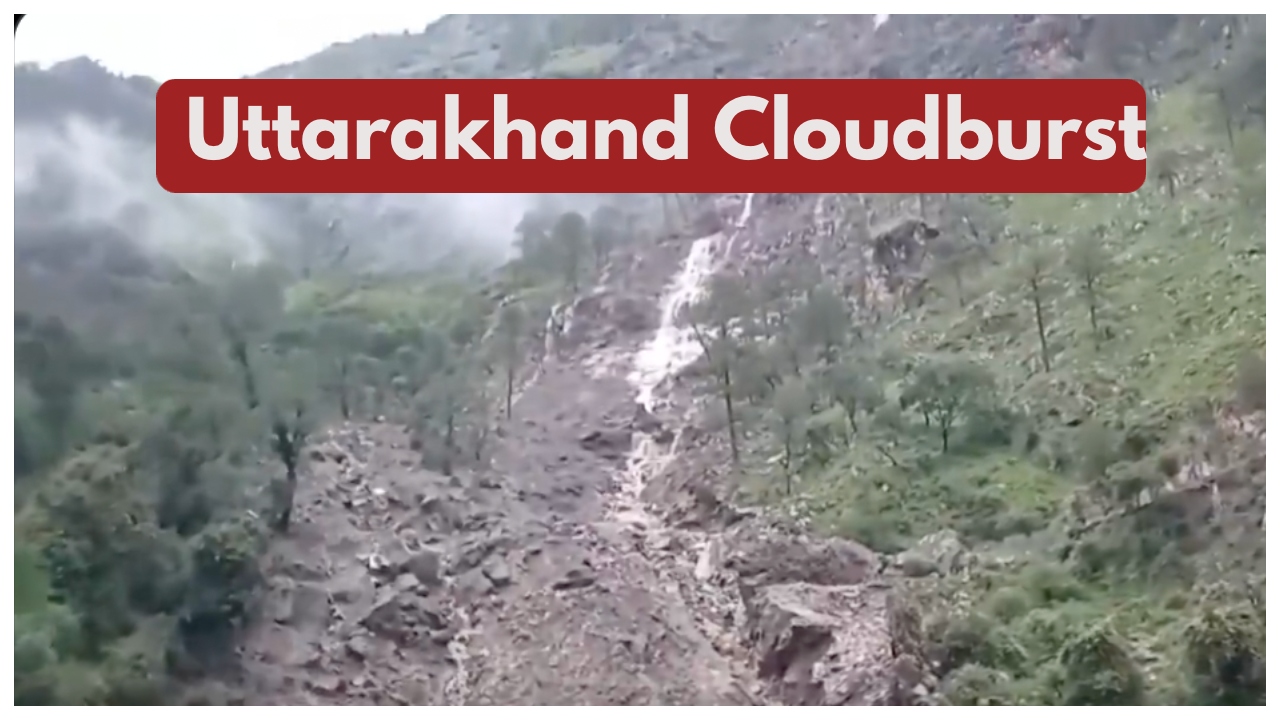On August 5, 2025, nature unleashed its fury on the serene mountains of Uttarakhand, when a massive cloudburst struck Uttarkashi, turning peaceful rivers into raging torrents. Within minutes, flash floods devastated the Khir Ganga river valley, swallowing villages like Dharali and Tharali, wiping out homes, hotels, and lives.
As the state grapples with the aftermath, rescue operations are in full swing. At least four people have been confirmed dead, and nearly 50 remain missing—many feared trapped under layers of mud and debris. The once-bustling tourism hub now lies in ruins, serving as a stark reminder of just how vulnerable Uttarakhand is to the forces of nature.
The Cloudburst That Changed Everything
It all started in the early hours of August 5 when an intense cloudburst hit the upper reaches of Uttarkashi. In a matter of minutes, heavy rainfall triggered uncontrollable flash floods along the Khir Ganga river.
Villagers reported hearing a deafening roar before walls of water, mud, and debris crashed down upon their homes. What used to be a calm river turned into a monster, devouring everything in its path.
Local resident Rajesh Panwar described the chaos:
“It was like the mountain itself was falling apart. We had no time to think—only to run.”
The deluge washed away nearly 20 to 25 hotels and homestays, leaving behind a trail of destruction that has crippled the local economy.
Shocking Videos Capture the Horror
In the age of smartphones, tragedies unfold in real time. Heart-stopping videos shared by residents and the Indian Army show the sheer scale of destruction. Entire sections of Dharali were submerged under swirling, mud-filled waters.
One clip shows terrified villagers screaming and scrambling to safety as debris-laden torrents ripped apart roads and houses. Another, shared by the Army’s Surya Command, highlights troops wading through dangerous floodwaters to rescue stranded residents.
These visuals aren’t just news—they’re a painful testament to the power of nature and the resilience of those who call Uttarakhand home.
Massive Rescue Operations Underway
The response was swift and fierce. The Indian Army, along with the National Disaster Response Force (NDRF) and State Disaster Response Force (SDRF), deployed teams to the disaster zone within hours.
Helicopters hovered over the valley, airlifting survivors from isolated spots. Bulldozers cleared debris-choked roads. Emergency shelters were established for displaced families, and medical teams worked around the clock to treat the injured.
Chief Minister Pushkar Singh Dhami expressed his condolences:
“The tragedy in Uttarakhand has left us all heartbroken. We are committed to leaving no stone unturned in rescue and relief efforts.”
Despite these efforts, the rugged Himalayan terrain and continuous rainfall have made the mission incredibly challenging. Many fear that the number of casualties could rise as rescue teams dig through the wreckage.
The Economic Fallout
For Uttarakhand, the disaster isn’t just about lost lives—it’s about lost livelihoods. Dharali and Tharali are popular tourist destinations, with their charming hotels and homestays forming the backbone of the local economy.
The destruction of 20–25 such establishments has left hundreds jobless overnight. Farmers, too, have been hit hard, as fertile land was swept away by the flash floods. With the Yamunotri highway closed due to landslides, tourism—a lifeline for the region—has been brought to a standstill.
Why Uttarakhand is So Vulnerable
If you’ve ever wondered why Uttarakhand makes headlines for disasters so often, the answer lies in its geography. Nestled in the Himalayas, the state’s steep slopes and narrow river valleys make it highly susceptible to cloudbursts and landslides, especially during monsoon season.
Experts warn that climate change has only worsened the situation. Warmer air holds more moisture, leading to sudden, extreme downpours. In short, cloudbursts are becoming more frequent and far deadlier.
The Climate Connection
The Uttarakhand cloudburst isn’t an isolated event—it’s part of a troubling pattern. Over the past decade, extreme weather events have battered the region repeatedly, from the Kedarnath floods in 2013 to recurring landslides and flash floods every monsoon season.
Scientists say these disasters are a direct result of global warming. Rising temperatures are destabilizing the Himalayan ecosystem, while deforestation and unplanned construction further weaken the landscape’s natural defenses.
Unless urgent action is taken, Uttarakhand may continue to suffer catastrophic events with increasing frequency.
Impact on Pilgrimage and Tourism
The disaster has also disrupted the sacred Char Dham Yatra. With highways blocked and villages cut off, pilgrims have been advised to delay their journeys until the situation improves. This isn’t just a setback for religious tourism—it’s a devastating economic blow for thousands who rely on these seasonal pilgrimages for their livelihood.
The once-bustling inns, restaurants, and shops now sit empty, their owners left wondering when—or if—life will return to normal.
Lessons We Cannot Ignore
The tragedy in Uttarakhand underscores the urgent need for change. Experts and environmentalists are calling for:
-
Stricter construction laws in eco-sensitive zones.
-
Early warning systems for cloudbursts and flash floods.
-
Reforestation initiatives to stabilize mountain slopes.
-
Public education campaigns on disaster preparedness.
This isn’t just about saving lives during the next storm—it’s about ensuring that communities are resilient enough to recover faster when disaster strikes.
The Human Side of the Disaster
Beyond the statistics are real stories of survival and heartbreak. Families searching for missing loved ones. Children clinging to parents as floodwaters rose. Neighbors risking their lives to pull each other to safety.
One survivor from Dharali described how he and his family spent hours on the roof of their submerged house before Army helicopters arrived:
“We didn’t know if we’d see another sunrise. But the soldiers came, and we were saved.”
These stories remind us that even in the darkest times, the human spirit refuses to break.
Read More: Aditya Infotech Share Price Jumps 50% on Listing: Should You Buy or Wait?
Conclusion
The Uttarakhand cloudburst isn’t just a natural disaster—it’s a wake-up call. It’s a reminder that our mountains, as majestic as they are, demand respect. We can’t control nature’s fury, but we can prepare for it, adapt to it, and learn from it.
For now, rescue teams continue their tireless search for the missing. But once the immediate crisis passes, the real work must begin: rebuilding lives, restoring the land, and rethinking how we coexist with nature.
Because if there’s one lesson this disaster has taught us, it’s this: Uttarakhand will endure. Its people will rise again. But we must help them build a safer, stronger future.













One thought on “Uttarakhand Cloudburst: Deadly Flash Floods in Uttarkashi Leave 4 Dead, 50 Missing, and Entire Villages Swept Away”